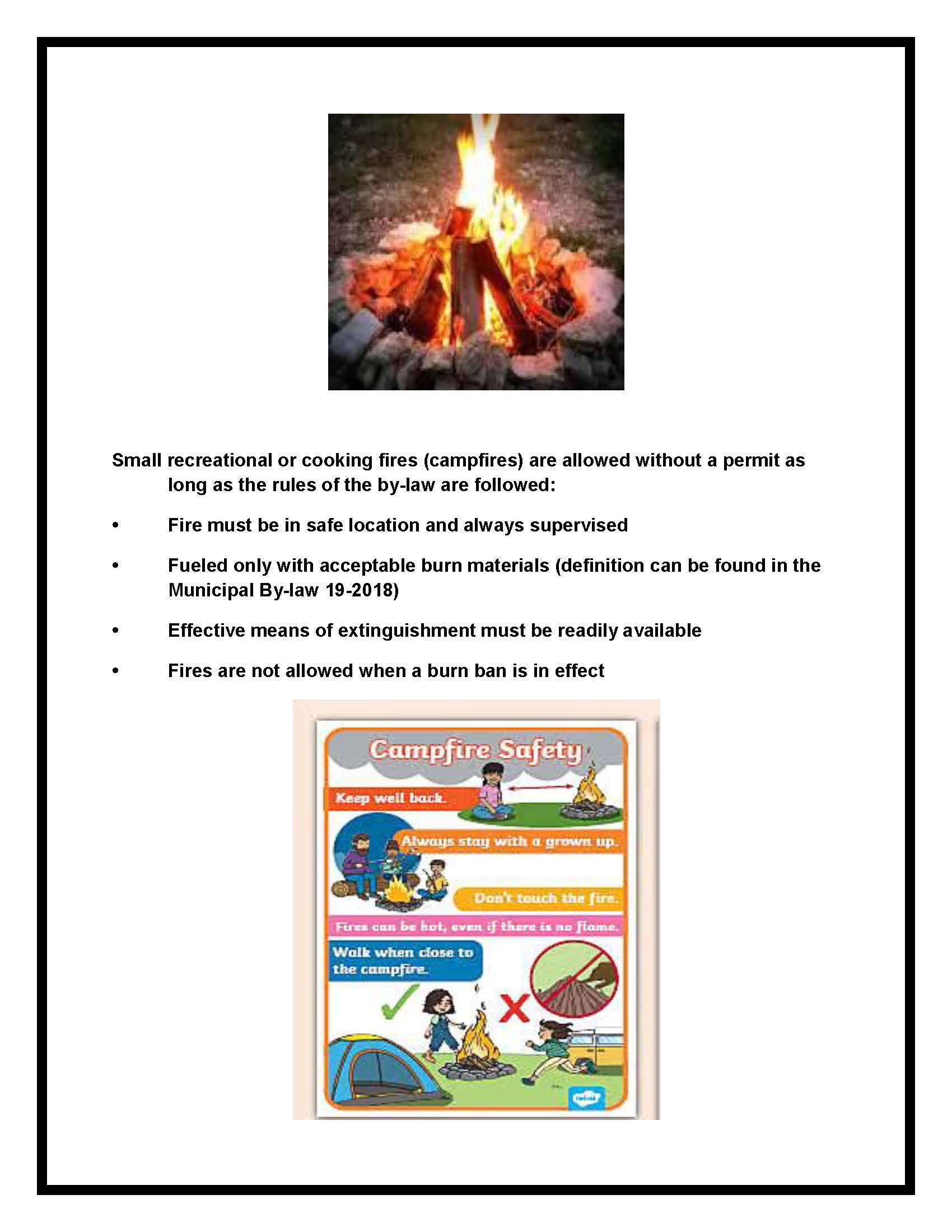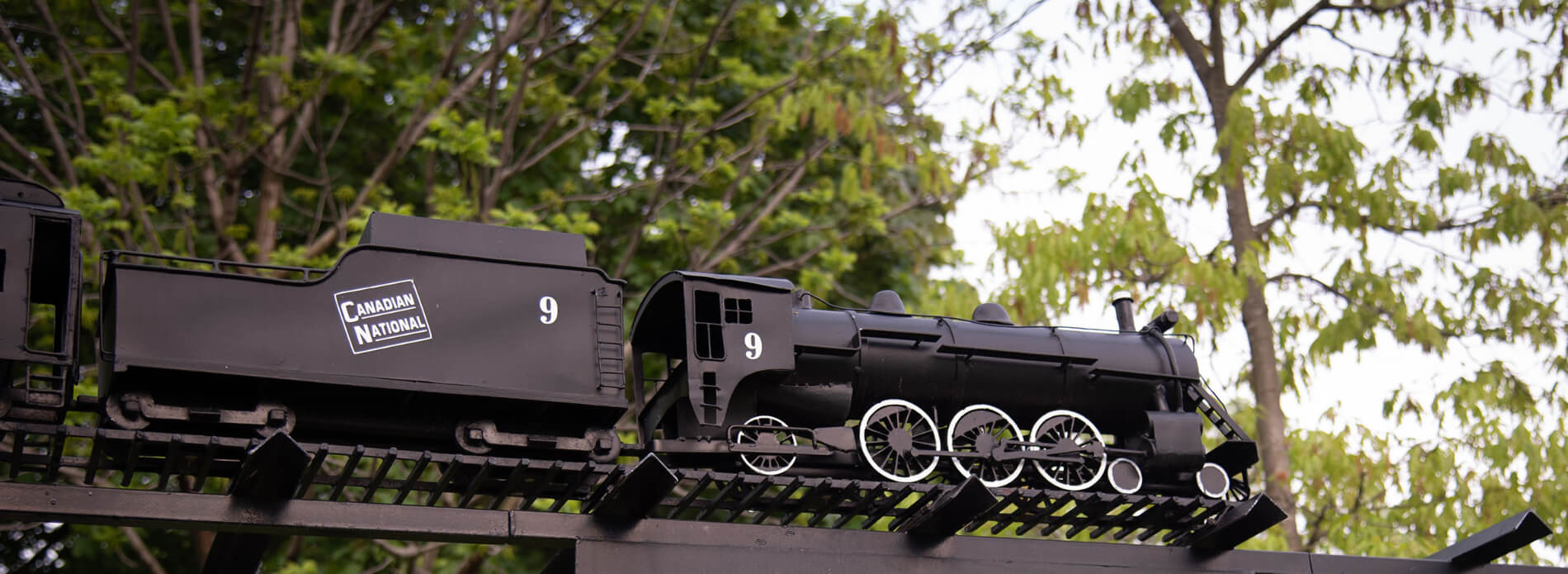A Guide for Small Safe Recreational Campfires

Important Details to Know
"Recreational Fire" means a small outdoor fire such as a campfire set within a confined area or device such as an outdoor fireplace or fire pit, situated in a "Safe Location" and measuring no more than 0.70 metres (27") in any dimension and supervised at all times and burning Acceptable Burn Material and used for cooking or warmth.
"Safe Location" means outdoors and not on a porch or balcony area that is roofed or otherwise covered, or near dry vegetation, or in any other place conducive to unwanted development or spread of fire or explosion, or supported by combustible material. The Safe Location for recreational fires shall be a minimum of 5 metres from any structure and a minimum of 5 metres from adjacent property lines. The safe location for an Open Air Burn shall be a minimum of 30 metres from any structure and a minimum of 30 metres from adjacent property lines. The property line setbacks for a safe location does not apply to campgrounds.
"Acceptable Burn Material" means commercially produced charcoal or briquettes, small amounts of white or brown paper or cardboard used to start a fire, dry seasoned wood that has been generated on the landowners own property, dry wood by-products that have not been chemically treated, painted or stained, purchased fire logs or purchased firewood sold for the purpose of a "Small confined fire".
"Prohibited Burn Materials" means any material other than as described under "Acceptable Burn Materials." Specifically prohibited under this Bylaw and not to be burned under any circumstances include household waste, human or animal excrement, leaves, grass, treated lumber, insulation, asphalt shingles or other construction materials, commercial by-products such as those generated from wood working, deck building or landscaping businesses, tires, rubber, plastic, Styrofoam, petroleum or other potentially toxic waste materials.






